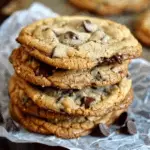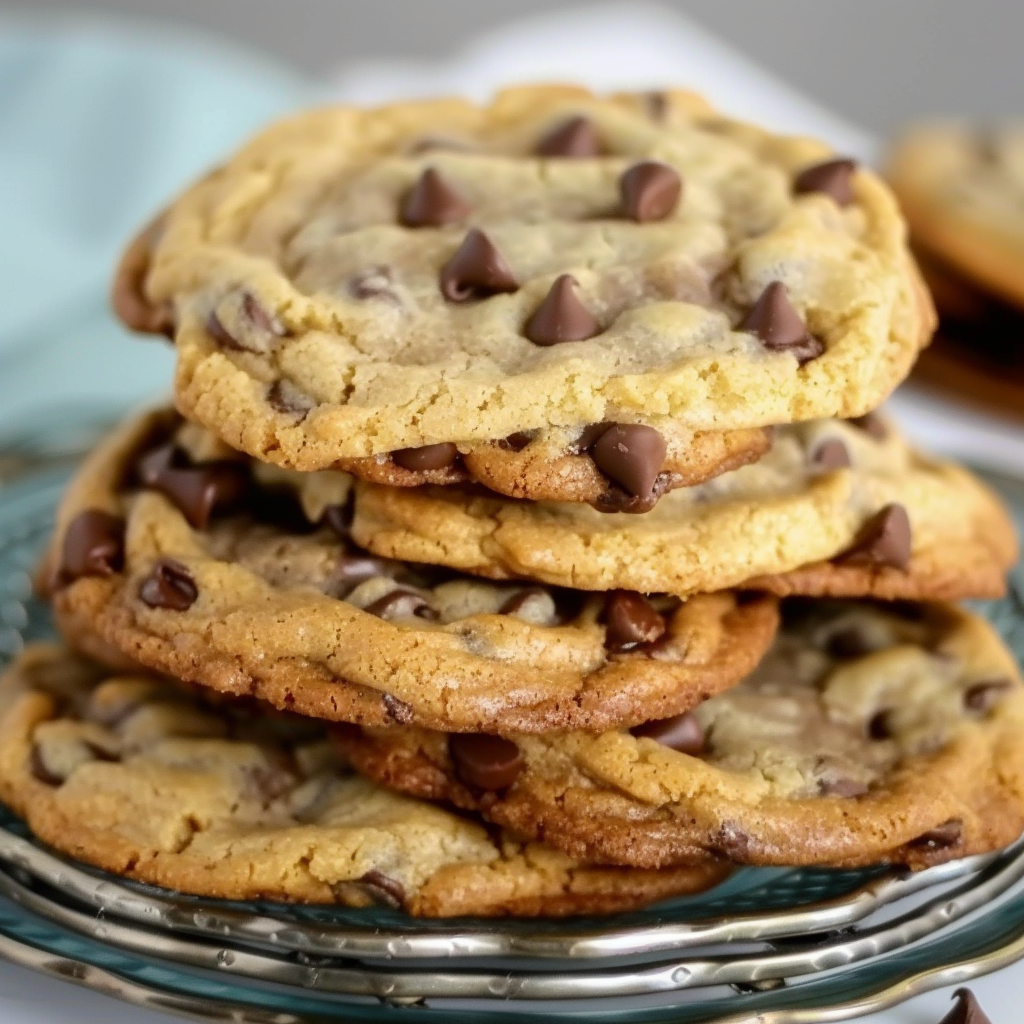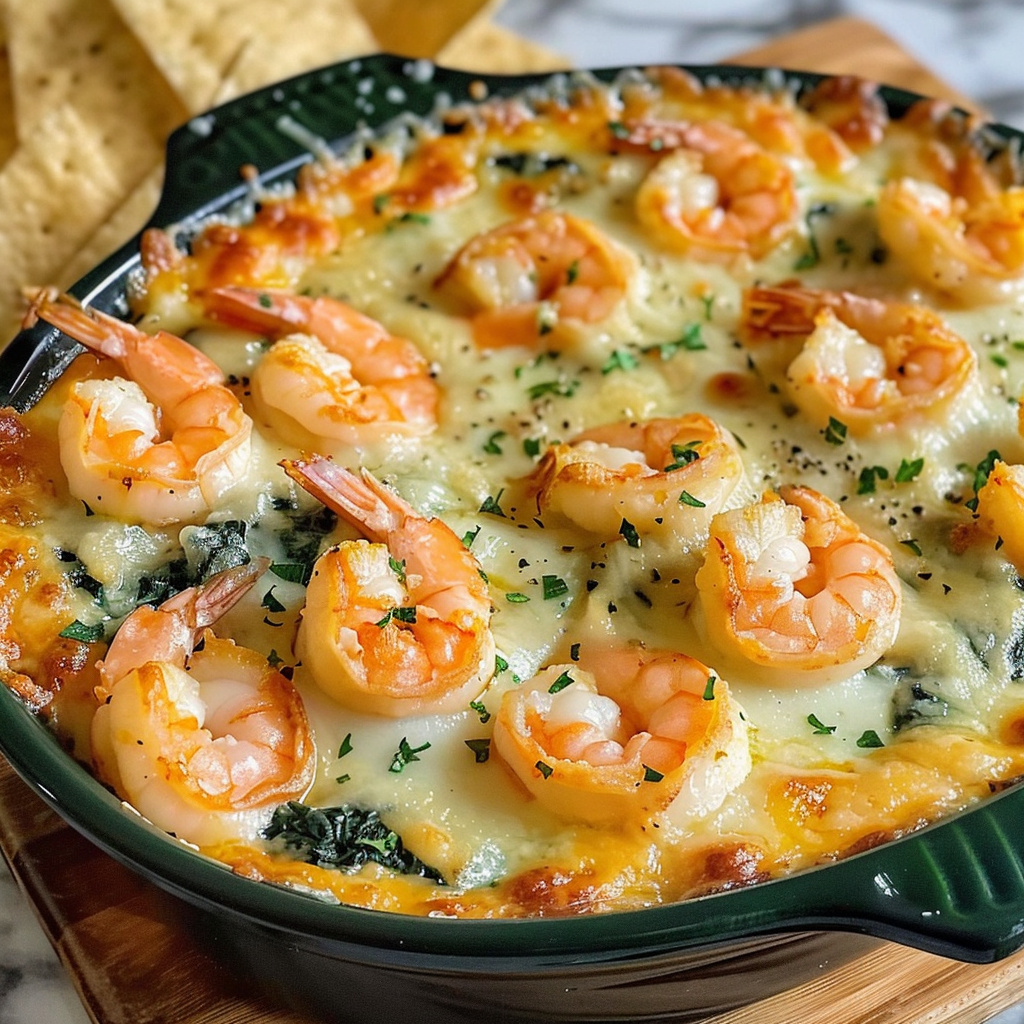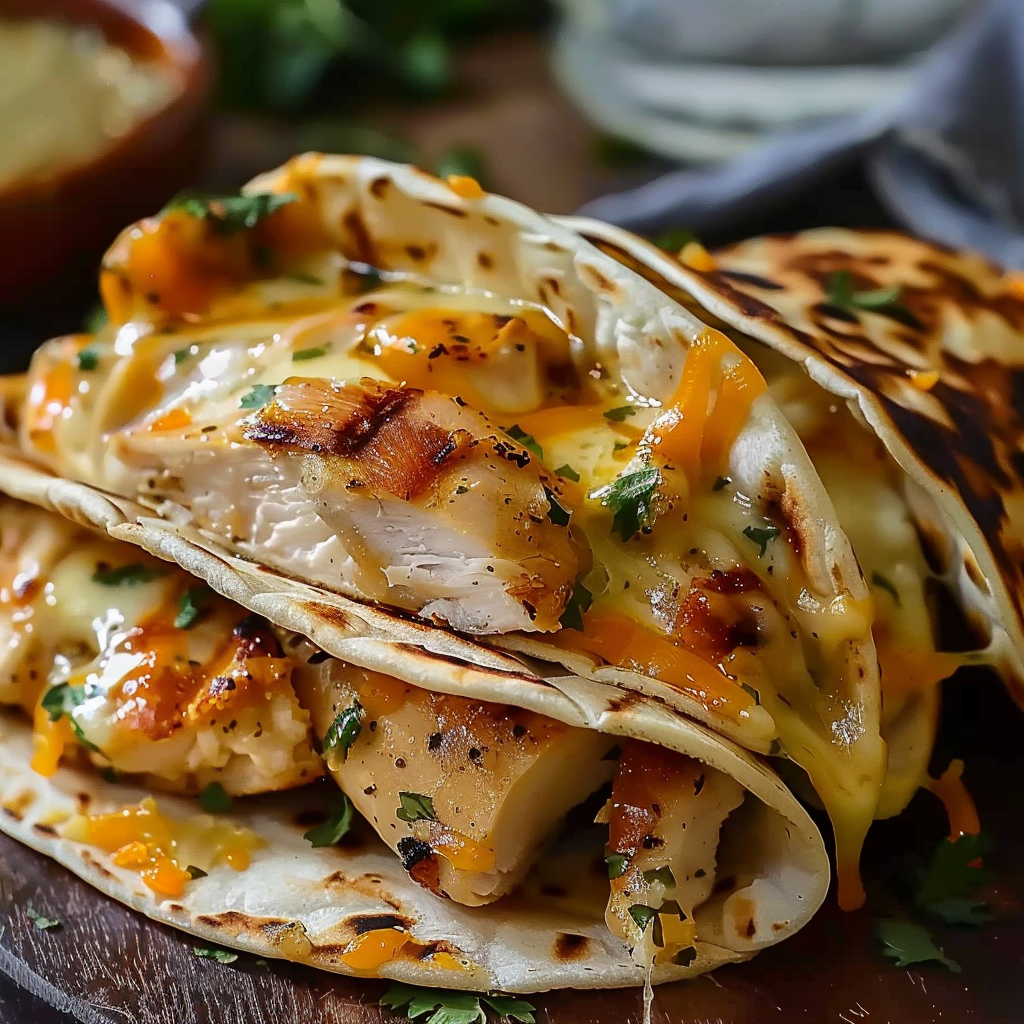Why We Crave Bakery-Style Cookies
There’s something undeniably comforting about biting into a chewy chocolate chip cookie fresh from the oven. The crispy edges, gooey centers, and deep flavor of real butter and melting chocolate trigger memories of childhood, cozy kitchens, and visits to our favorite bakeries. These nostalgic treats are more than just desserts—they’re a sensory experience built on texture, warmth, and rich flavor.
While it might seem like bakery-quality cookies require professional equipment or secret ingredients, that’s not the case. You can achieve that same indulgent texture and flavor at home with a few simple techniques and quality ingredients. Homemade cookies can actually surpass store-bought or even bakery cookies when done right—chewy in the center, slightly crisp on the outside, and loaded with semisweet chocolate chips in every bite.
The history of the chocolate chip cookie dates back to 1938, when Ruth Wakefield accidentally created the first batch at the Toll House Inn in Massachusetts. Since then, this classic cookie has evolved into countless variations, but what we all still crave is that perfect chewy texture paired with deep flavor.
Achieving the bakery-style cookie at home comes down to understanding the science behind ingredients, baking techniques, and even resting time. Whether you prefer a plain chocolate chip or a hearty oatmeal chocolate chip cookie, the secret lies in how you balance fat, sugar, flour, and baking time. By adjusting your method slightly, your kitchen can deliver cookies that rival your favorite bakery—warm, thick, and irresistibly chewy. For inspiration, browse this bakery-style cookie recipe board that includes creative takes and visual step-by-steps for mastering texture and presentation.
Understanding what makes cookies chewy vs. crispy is key. While crispy cookies rely on lower moisture and higher baking temperatures, chewy cookies are all about moisture retention, sugar ratio, and precise baking times. As you learn the difference, you’ll be able to modify recipes with confidence to suit your own texture preferences.
Before you preheat the oven, let’s look at the building blocks of these perfect treats. Every ingredient plays a crucial role in transforming dough into a golden-brown masterpiece. In the next section, we’ll explore each one in detail and explain exactly how they contribute to that sought-after chewiness. From all-purpose flour to baking soda, and from vanilla extract to the chocolate chips themselves, everything matters when it comes to baking cookies that are soft, chewy, and full of flavor.
Let’s dive into the essential ingredients that make a chewy cookie not just good—but unforgettable.
Key Ingredients for Chewy Chocolate Chip Cookies
Creating bakery-style chewy chocolate chip cookies starts with understanding how each ingredient contributes to the cookie’s texture, flavor, and structure. When used in the right proportions and combined using proper techniques, these ingredients create cookies with crisp edges and soft, gooey centers. Here’s a breakdown of what makes each one essential.
-
Unsalted Butter
Butter is the base of most cookie recipes, providing fat for richness and structure. For chewy cookies, use softened butter—not melted—to properly cream with sugar. Creaming introduces air into the dough, which helps create a soft interior while maintaining a slightly crisp edge. The flavor of real butter can’t be overstated—it gives cookies that deep, authentic bakery-style taste. -
Granulated Sugar and Brown Sugar
The sugar combination is key to texture. White sugar creates spread and crispness, while brown sugar—which contains molasses—adds moisture and chew. A 1:1 ratio, as in our recipe, is the sweet spot for perfectly chewy cookies. The molasses in brown sugar also contributes a rich, caramel-like flavor. -
Eggs
Eggs bind the ingredients and add moisture. Using room-temperature eggs ensures they incorporate smoothly, helping create a consistent dough. Eggs also provide structure, preventing cookies from becoming too flat or crumbly. -
Vanilla Extract
A pure vanilla extract enhances flavor and rounds out the sweetness. Though it’s used in small quantities, its impact on taste is noticeable. Learn more about how it’s made on Wikipedia. -
All-Purpose Flour
The choice of flour affects the thickness and chewiness of cookies. All-purpose flour, with its moderate protein content, gives the cookies enough structure without making them dry or cakey. For more insight on this staple ingredient, check out this guide on flour types. -
Baking Soda and Baking Powder
Leavening agents help cookies rise and spread. This recipe uses both:-
Baking soda reacts with acidic components (like brown sugar) for lift and spread.
-
Baking powder provides extra puff for a thicker, bakery-style cookie.
Understanding the science of sodium bicarbonate can help you adjust recipes to your liking.
-
-
Salt
A touch of salt balances the sweetness and enhances the flavors of butter and chocolate. It’s essential for depth and richness. -
Semisweet Chocolate Chips
Classic semisweet chips offer the right balance between bitter and sweet. Their stability in baking means they hold shape, offering pockets of melted chocolate in every bite. For more on the different types of chocolate, explore their profiles to see which suits your taste. -
Optional Add-ins for Bakery Flair
-
Sea salt flakes sprinkled on top for a gourmet touch
-
Chopped nuts like walnuts or pecans for added crunch
-
Chocolate chunks for pockets of melted chocolate
-
Try ideas from this Pinterest board of chewy cookie upgrades for creative inspiration.
-
Mastering these ingredients allows you to tweak any base recipe. Whether you’re baking classic chocolate chip or oatmeal chocolate chip cookies, knowing the role each component plays puts you in control of flavor and texture—key to making bakery-style cookies at home.
Step-by-Step Instructions
Once your ingredients are prepped, it’s time to bring them together using precise techniques that ensure your cookies bake up chewy, thick, and bakery-style. This step-by-step method is optimized for perfect results every time—no guesswork required.
1. Preheat the Oven
Set your oven to 350°F (175°C). This moderate temperature allows the cookies to spread slowly, creating crisp edges while keeping the centers soft and chewy. Line a baking sheet with parchment paper—this prevents sticking and promotes even browning.
2. Cream the Butter and Sugars
In a large bowl, use a hand mixer or stand mixer to beat 1 cup of softened unsalted butter with 1 cup granulated sugar and 1 cup packed brown sugar until the mixture is light and fluffy. This should take about 3–4 minutes on medium speed.
-
This step is essential for texture development. The creaming process incorporates air, which contributes to the cookie’s soft interior and light chew.
-
Learn more about how sugar affects baking from this sugar overview.
3. Add Eggs and Vanilla Extract
Add 2 large eggs, one at a time, beating well after each addition. Then mix in 2 teaspoons of pure vanilla extract until fully incorporated.
-
Room temperature eggs blend more easily and help maintain a smooth, cohesive dough.
-
Vanilla brings aromatic warmth and sweetness—key to that nostalgic bakery cookie flavor. More on this ingredient at vanilla extract.
4. Mix the Dry Ingredients Separately
In a separate bowl, whisk together:
-
3 cups all-purpose flour
-
1 teaspoon baking soda
-
1/2 teaspoon baking powder
-
1 teaspoon salt
-
Using both leavening agents provides a balance of lift and spread, crucial for the cookie’s soft but structured texture.
-
Read more about baking soda’s chemical role in cookies.
5. Combine Wet and Dry Mixtures
Gradually add the dry ingredients to the wet mixture. Mix until just combined—avoid overmixing, as this can lead to tough cookies due to gluten development.
-
Dough should be thick, but not dry. If it feels sticky, chill it for 15–20 minutes before the next step.
6. Fold in the Chocolate Chips
Gently stir in 2 cups of semisweet chocolate chips using a spatula or wooden spoon. Make sure the chips are evenly distributed throughout the dough.
-
For an extra indulgent look, press a few chips on top of each dough ball before baking. See creative presentation ideas in this Pinterest guide.
7. Portion the Dough
Use a cookie scoop or tablespoon to form evenly-sized balls of dough. Place them on the prepared baking sheet about 2 inches apart to allow for spreading.
-
Uniform size ensures even baking. A cookie scoop helps create that professional, bakery-style look.
8. Bake to Perfection
Bake for 10–12 minutes, or until the edges are golden brown and the centers look set but still slightly soft.
-
Don’t overbake—chewy cookies continue to cook slightly after being removed from the oven. This concept is known as “carryover baking.”
9. Cool Properly
Let the cookies cool on the baking sheet for 5 minutes, then transfer them to a wire rack. This allows them to firm up without becoming hard.
10. Store to Maintain Chewiness
Once cooled, store cookies in an airtight container at room temperature. They’ll stay soft and chewy for 3–4 days. For longer storage, freeze baked cookies or raw dough. Tips for freezing and reheating can be found on this Pinterest pin about freezing dough.
When following these steps, you’re not just baking—you’re crafting chewy chocolate chip cookies that deliver that perfect balance of texture and flavor. And when you understand each phase of the process, you can easily modify your next batch with mix-ins or flavor tweaks inspired by this chewy cookie board.
Texture Secrets: How to Achieve Gooey Centers and Crisp Edges
The hallmark of a bakery-style chewy chocolate chip cookie is its contrast of textures—crispy edges with a soft, gooey center. Achieving this at home comes down to three core factors: ingredient balance, baking time, and cooling technique. Here’s how each one plays a role.
1. Bake at the Right Temperature
Set your oven to 350°F (175°C) and preheat it thoroughly. This temperature gives the cookie enough time to spread slowly, letting the edges cook faster than the center. That’s what creates the golden rim and soft middle.
-
Higher temperatures (like 375°F) can make cookies spread too quickly, leading to crispy results with less chew. For more even texture control, always preheat the oven fully before baking.
-
Use an oven thermometer if your bakes are inconsistent—many ovens run hotter or cooler than their setting.
2. Cream Butter and Sugar Properly
The creaming method isn’t just for mixing—it aerates the dough, which helps create that tender interior. Properly creamed butter traps air and integrates sugars evenly, giving you that perfect balance between fluff and density.
-
Want to dive deeper into sugar’s role in texture? This sugar science overview breaks down how each type behaves during baking.
3. Use More Brown Sugar than White (or Equal Ratio)
Brown sugar contains molasses, which attracts and retains moisture. It makes cookies softer and chewier compared to white sugar, which tends to promote crispness.
-
A 1:1 ratio, as used in the recipe, gives a nice balance of chewy center and crisp edge. For even softer results, you can use more brown sugar next time.
4. Don’t Overmix After Adding Flour
Once you incorporate flour, overmixing activates gluten, which can make cookies dense or tough. Mix just until you no longer see dry flour.
-
If you’re unsure, finish mixing by hand with a spatula after the initial blend.
5. Chill the Dough Before Baking
Chilling helps control spread and intensifies flavor. It allows the butter to firm up, so the cookies don’t flatten too quickly in the oven.
-
For thicker cookies with defined edges and soft centers, chill the dough for 30 minutes to 1 hour before baking.
-
This trick is used by professional bakers and recommended in nearly every chewy cookie recipe on Pinterest boards like this one.
6. Underbake Slightly for Soft Centers
Remove the cookies when the edges are golden brown but the center still looks slightly undercooked. This ensures the middle stays soft and fudgy once cooled.
-
The residual heat from the pan will continue to cook the centers—this is known as carryover baking.
-
If you’re baking oatmeal cookies, the same principle applies; just adjust baking times depending on thickness.
7. Let Cookies Rest on the Baking Sheet
Instead of transferring them immediately, let cookies cool on the baking tray for 5–7 minutes. This helps the center set up without overbaking and allows the cookies to maintain their chewy structure.
8. Bake on Parchment Paper or Silicone Mats
Both surfaces promote even browning and help cookies bake with a uniform texture. Avoid greasing pans with butter or oil, which can cause excess spreading.
9. Measure Ingredients Precisely
Too much flour results in cakey cookies, while too little makes them flat and crisp. For consistency, use a digital kitchen scale to measure flour by grams rather than cups—especially if you’re aiming for professional results like those shown in this cookie texture board.
By applying these texture-focused techniques, you’ll create cookies with a satisfying bite—crispy on the outside and melt-in-your-mouth chewy on the inside. Whether you’re baking classic chocolate chip or experimenting with oatmeal chocolate chip variations, these texture tips are essential for bakery-quality results.
Storage & Reheating Tips
Once your chewy chocolate chip cookies are perfectly baked, storing them the right way is essential to maintain their soft texture and fresh flavor. Without proper storage, even the best cookies can turn dry, crumbly, or stale within a day. Here’s how to keep your cookies delicious for days—or even weeks.
1. Use an Airtight Container
Store cookies in an airtight container at room temperature as soon as they’ve cooled completely. This helps retain moisture and keeps the chewy centers from drying out.
-
For best results, use a container with a tight seal, and layer cookies between sheets of parchment paper to prevent sticking.
2. Add a Slice of Bread
Place a slice of white bread in the container with the cookies. The cookies will absorb the bread’s moisture, staying soft and chewy without becoming soggy.
-
Replace the bread every 1–2 days to maintain freshness.
3. Keep Them at Room Temperature
Avoid storing cookies in the refrigerator—it dries them out and makes them hard. Room temperature is ideal for maintaining that freshly baked texture for up to 4–5 days.
4. Freeze for Long-Term Storage
Cookies freeze exceptionally well. Let them cool, then place them in a freezer-safe bag or container. For best results:
-
Freeze cookies in a single layer first, then stack them with parchment paper between layers.
-
Label and date your batch for easy tracking.
You can also freeze the cookie dough itself. Portion it into balls, freeze on a baking sheet, then transfer to a zip-top freezer bag. This way, you can bake one or two cookies at a time straight from frozen—just add an extra 1–2 minutes to the bake time.
-
Explore more freezing methods from this Pinterest board on freezing cookie dough.
5. Reheat for a Just-Baked Texture
To revive cookies and bring back that gooey center:
-
Microwave for 10–15 seconds to soften them up and re-melt the chocolate.
-
For multiple cookies, reheat in a 300°F (150°C) oven for 5–6 minutes.
When stored and reheated correctly, your cookies can taste freshly baked even days later. Whether you’re keeping a batch on hand for guests or preparing dough in advance for the holidays, proper storage keeps your bakery-style cookies tasting as indulgent as the day they were baked.
Creative Add-Ins for Your Chocolate Chip Cookies
Once you’ve mastered the classic chewy chocolate chip cookie, it’s time to take things up a notch. With just a few tweaks and mix-ins, you can create unique flavor combinations that give your cookies a gourmet, bakery-style twist. Here are some of the best ideas to personalize your next batch.
1. Chopped Nuts
Add ½ to 1 cup of chopped nuts like walnuts, pecans, or macadamia nuts for a rich crunch that contrasts beautifully with the soft cookie texture. Toasting the nuts beforehand enhances their flavor and aroma.
2. Chocolate Chunks Instead of Chips
Swap semisweet chips with hand-cut chocolate chunks for dramatic, gooey pockets of melted chocolate. Try a blend of chocolate types (dark, milk, or even white) for depth and balance.
3. Sea Salt Flakes
Sprinkle a pinch of flaky sea salt on top of each dough ball before baking. The salt enhances sweetness and adds a satisfying contrast to the gooey chocolate and rich dough.
4. Toffee Bits or Caramel Chunks
Fold in toffee pieces or soft caramel chunks to create pockets of melt-in-your-mouth sweetness. This adds chewiness and a rich, buttery flavor that pairs beautifully with brown sugar.
5. Dried Fruit and Spices
-
For a subtle twist, add a pinch of cinnamon or espresso powder to deepen the flavor.
-
Dried fruits like cranberries, raisins, or cherries can complement the chocolate and add extra texture.
6. Shredded Coconut
Stir in ½ cup of unsweetened shredded coconut for a hint of tropical flavor and chewy texture. It works especially well with dark chocolate and macadamia nuts.
These customizations allow you to experiment and create your own signature cookie. Check out this Pinterest board of chewy cookie upgrades for even more inventive ideas and flavor combinations. Whether you want a nutty crunch, extra gooeyness, or a hint of spice, your next cookie batch can be anything but ordinary.
Why Oatmeal Makes the Perfect Chewy Cookie Base
Oats aren’t just a healthy breakfast option—they’re a secret weapon in baking chewy, hearty cookies. When combined with chocolate chips, oats bring both texture and flavor to the table, making them a favorite base for anyone who loves a dense, soft cookie with a bit of bite.
1. Texture and Chew
Rolled oats give oatmeal cookies their signature chew, adding a slightly nutty flavor and hearty consistency that holds up well to chocolate chips and mix-ins.
2. Nutritional Benefits
Oats add more fiber and nutrients than traditional flour-based cookies. This makes oatmeal chocolate chip cookies a feel-good indulgence with a bit more substance.
3. Better Moisture Retention
Oats absorb liquid differently than flour, helping cookies stay moist for longer. This is especially useful for soft and chewy cookies that need to maintain freshness over several days.
4. Versatility in Baking
You can pair oats with raisins, nuts, dried fruit, and even peanut butter. Their mild flavor acts as a canvas for customization.
Curious how oats differ in baking? Explore their profiles in this article on rolled oats. Whether you’re a fan of classic oatmeal chocolate chip or looking to try a gluten-free version, oats give cookies the perfect chewy backbone.
Soft and Chewy Oatmeal Chocolate Chip Cookies Recipe
This version of oatmeal chocolate chip cookies delivers that ideal combination of soft texture, oaty chew, and rich chocolate flavor. Here’s a go-to recipe you can master and modify.
Ingredients:
-
1 cup unsalted butter, softened
-
1 cup brown sugar
-
½ cup granulated sugar
-
2 large eggs
-
2 teaspoons vanilla extract
-
1 ½ cups all-purpose flour
-
1 teaspoon baking soda
-
½ teaspoon salt
-
3 cups old-fashioned rolled oats
-
2 cups semisweet chocolate chips
Instructions:
-
Preheat oven to 350°F (175°C). Line baking sheets with parchment paper.
-
Cream the butter and both sugars until light and fluffy.
-
Beat in eggs one at a time, then stir in vanilla.
-
In a separate bowl, whisk flour, baking soda, and salt.
-
Gradually mix dry ingredients into the butter mixture.
-
Stir in oats and chocolate chips.
-
Scoop dough into balls and place 2 inches apart.
-
Bake for 10–12 minutes or until golden around the edges.
-
Cool on baking sheet 5 minutes, then transfer to a wire rack.
Like traditional chocolate chip cookies, oatmeal versions benefit from slightly underbaking to maintain a gooey center. Try variations with nuts, raisins, or white chocolate for new flavor combos.
Texture Troubleshooting for Oatmeal Cookies
If your oatmeal chocolate chip cookies are turning out too dry, crumbly, or cakey, don’t worry—these common issues are easy to fix. Here’s how to troubleshoot and get the perfect chewy result every time.
1. Dry or Cakey Cookies?
-
Too much flour or not enough fat is often the culprit. Use a digital scale to ensure proper measurements.
-
Overbaking will also dry them out. Remove cookies from the oven when the center still looks a little soft.
2. Crumbly Dough?
-
If your dough isn’t holding together, it could be too dry. Add a tablespoon of milk or melted butter to bring it back together.
-
Make sure the butter is properly creamed; cold butter can cause the dough to resist binding.
3. Spreading Too Much?
-
Chilling the dough before baking helps prevent excessive spread and gives you a thicker, more bakery-style result.
-
Check your leavening agents—expired baking soda can affect structure.
4. Using the Right Oats
-
Rolled oats give the best chewy texture. Quick oats tend to absorb more liquid and can make cookies soft but cakey.
-
Want to know more? Visit the Wikipedia entry on oats for the science behind the types.
Following these tips ensures you get cookies that are chewy, not cakey—and rich, not crumbly. Small tweaks make a big difference when it comes to oatmeal cookie texture.
Flavor Twists for Oatmeal Chocolate Chip Cookies
Oatmeal cookies are highly adaptable. Once you’ve nailed the base, try these flavorful twists to make your cookies stand out while keeping their chewy integrity.
1. Warm Spices
-
Add a teaspoon of cinnamon, nutmeg, or cardamom to give your cookies warmth and depth.
-
These spices pair especially well with brown sugar and oats.
2. Dried Fruit
-
Mix in raisins, cranberries, or chopped dried apricots for bursts of chewy sweetness.
-
For a tropical twist, try pineapple bits or dried mango.
3. Coconut and Nuts
-
Add unsweetened shredded coconut for chew and subtle sweetness.
-
Pair with pecans or almonds for a balanced bite.
4. Peanut Butter Swirl
-
Blend ¼ cup of creamy peanut butter into the dough for a rich nutty base. This adds protein and intensifies chewiness.
5. White or Dark Chocolate
-
Swap semisweet chips for white chocolate or bittersweet chocolate chunks to vary sweetness and texture.
Need more ideas? This Pinterest board on chewy cookie flavor upgrades has endless inspiration for customizing your cookie game.
Chewy Cookie Baking Tips from Pro Bakers
These expert-backed tips ensure your cookies come out chewy, consistent, and crowd-pleasing every time.
-
Avoid Overbaking: Pull cookies out when they look slightly underdone in the center. Residual heat will finish the job.
-
Let Cookies Cool on the Sheet: Cooling for 5–7 minutes on the baking tray helps the center firm up without drying out.
-
Use a Cookie Scoop: Ensures uniform size and even baking. Perfect for achieving that polished, bakery-style look.
-
Rotate Your Pan: Turn the tray halfway through baking for even browning, especially if your oven has hot spots.
-
Test Your Oven: Use an oven thermometer to ensure the temperature is accurate.
With these simple habits, you’ll get consistent results and perfectly chewy cookies every time.
Serving & Pairing Ideas
Serve your chewy cookies warm with a cold glass of milk or pair them with coffee for an afternoon treat. For something special:
-
Make ice cream sandwiches using two cookies and a scoop of vanilla or salted caramel ice cream.
-
Drizzle with melted chocolate or dip half the cookie in white chocolate for presentation.
Cookies this good deserve to be shared—or savored slowly, one chewy bite at a time.

FAQs: People Also Ask
What makes cookies chewy vs crispy?
Chewy cookies retain more moisture. Brown sugar, soft butter, and slightly underbaking all contribute to chewiness, while more granulated sugar and longer baking times produce crispy cookies.
Should I chill cookie dough before baking?
Yes. Chilling helps control spread and improves flavor. It allows the butter to firm up, leading to thicker, chewier cookies with richer taste.
Can I substitute quick oats for rolled oats in cookies?
You can, but expect softer, slightly cakier results. Rolled oats provide a heartier chew, making them ideal for oatmeal chocolate chip cookies.
Why do my cookies go flat?
Cookies often flatten due to warm dough, too much sugar, or not enough flour. Chilling the dough and measuring ingredients accurately can help.
How do I make cookies stay soft for days?
Store in an airtight container with a slice of bread. The cookies absorb moisture from the bread, helping them stay soft and chewy longer.

Chewy Chocolate Chip Cookies Bakery Style At Home
- Author: Naomi
Description
These chewy chocolate chip cookies, baked bakery-style with golden edges and soft centers, are a perfect blend of sweetness and texture. Made with rich brown sugar, real butter, and premium semisweet chocolate chips, they’re the ultimate indulgence for cookie lovers. Includes a delicious oatmeal variation for extra chew and heartiness.
Ingredients
- 1 cup (226g) unsalted butter, softened
- 1 cup (200g) granulated sugar
- 1 cup (220g) packed brown sugar
- 2 large eggs
- 2 teaspoons vanilla extract
- 3 cups (375g) all-purpose flour
- 1 teaspoon baking soda
- 1/2 teaspoon baking powder
- 1 teaspoon salt
- 2 cups (340g) semisweet chocolate chips
Instructions
- Preheat your oven to 350°F (175°C) and line a baking sheet with parchment paper.
- In a large bowl, cream together the butter, granulated sugar, and brown sugar until light and fluffy.
- Beat in the eggs one at a time, then add vanilla extract and mix until combined.
- In a separate bowl, whisk together the flour, baking soda, baking powder, and salt.
- Gradually add the dry ingredients to the wet ingredients, mixing until just combined.
- Fold in the chocolate chips evenly throughout the dough.
- Scoop tablespoons of dough onto the prepared baking sheet, spacing them about 2 inches apart.
- Bake for 10–12 minutes, or until the edges are golden brown and the centers are set.
- Allow the cookies to cool on the baking sheet for a few minutes before transferring to a wire rack to cool completely.
- Store in an airtight container to keep them soft and chewy.
Notes
-
For best results, use a kitchen scale for flour and sugar.
-
Always use room temperature butter and eggs.
-
Chill dough for at least 30 minutes for thicker cookies.
-
Slightly underbake for gooey centers—cookies continue baking as they cool.
-
Cookies can be frozen after baking or before; bake from frozen with 1–2 extra minutes.











